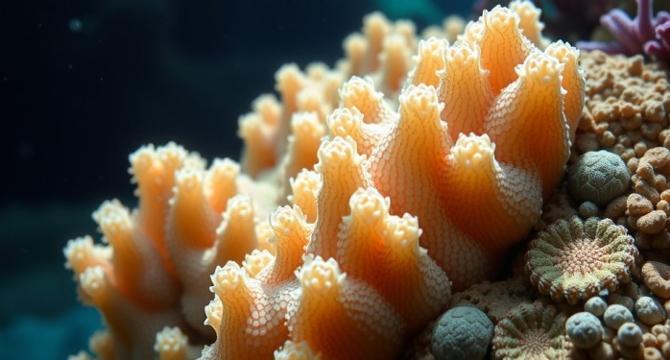Bioengineer
4d
307

Image Credit: Bioengineer
Discovery of the Earliest Phosphatic Stromatoporoid Sponge in South China
- Scientists have discovered the oldest known phosphatic stromatoporoid sponge, Lophiostroma leizunia, dating back 480 million years in South China.
- This find extends the fossil record of stromatoporoid reefs by 20 million years, shedding light on early biomineralization strategies of these reef builders.
- Stromatoporoids played a crucial role in reef formation during the Palaeozoic era, resembling modern corals in marine environments.
- The study reveals that Lophiostroma leizunia utilized fluorapatite for skeletal structure formation, making it the first animal to employ multiple biomineral components.
- The discovery contributes to understanding the Great Ordovician Biodiversification Event, showcasing the biological evolution during this transformative epoch.
- The findings elucidate the ecological complexity of Early Ordovician marine environments with diverse reef ecosystems supported by Lophiostroma leizunia and other marine organisms.
- Research on Lophiostroma leizunia offers insights into early biomineralization processes and genetic capacities of ancient sponges, indicating a high level of adaptability.
- The study highlights South China's paleontological significance and its role in providing a window into the diversification of marine life during the Ordovician period.
- The discovery points to the resilience and adaptability of early metazoan life, shaping the evolutionary paths of marine ecosystems.
- The fossilization methods observed in Lophiostroma leizunia suggest the potential for more discoveries of ancient species with diverse biomineralization strategies, revolutionizing our understanding of past ecological settings.
Read Full Article
18 Likes
For uninterrupted reading, download the app